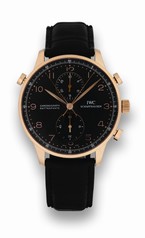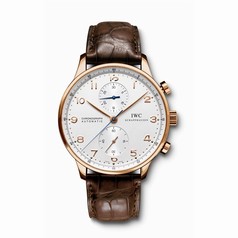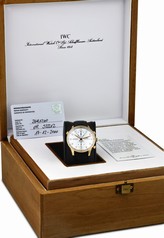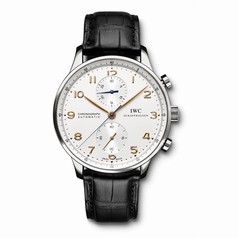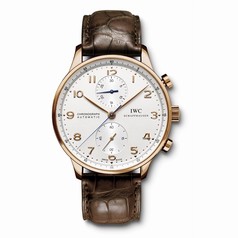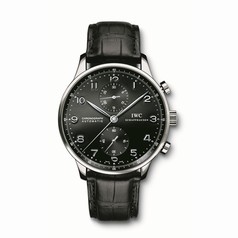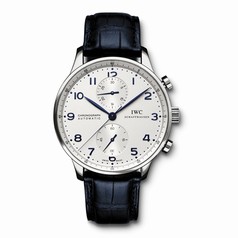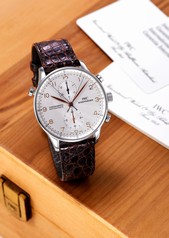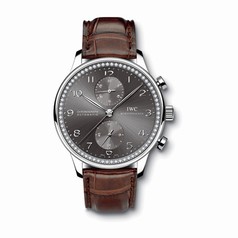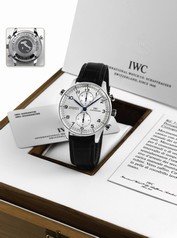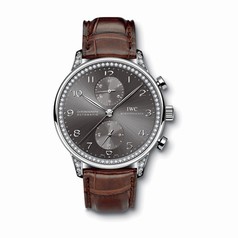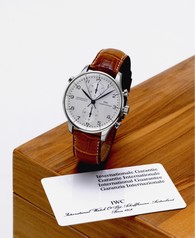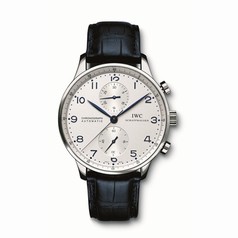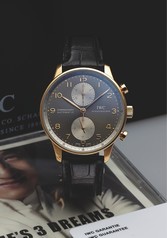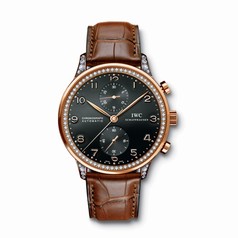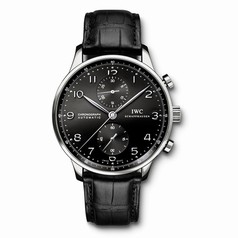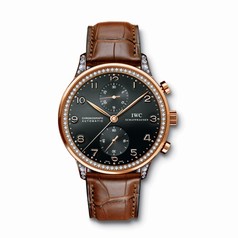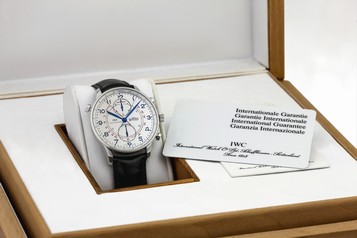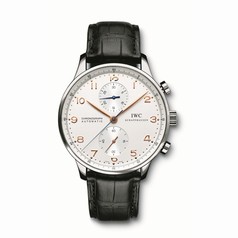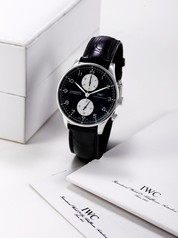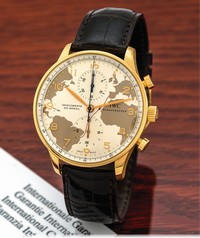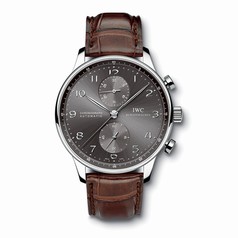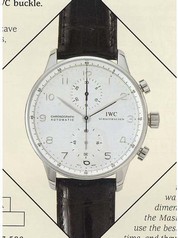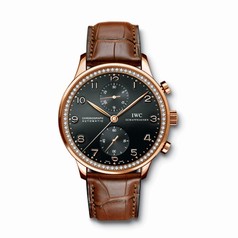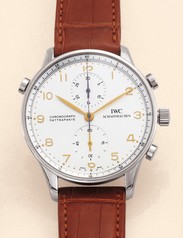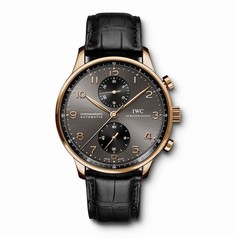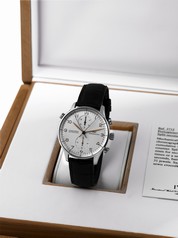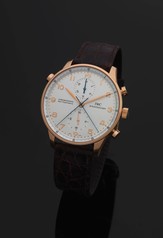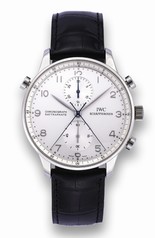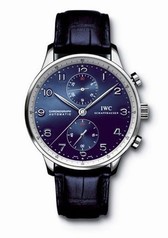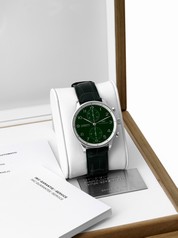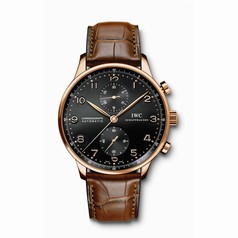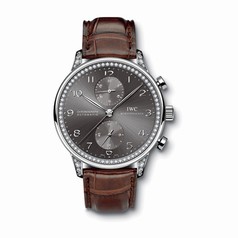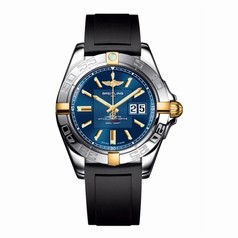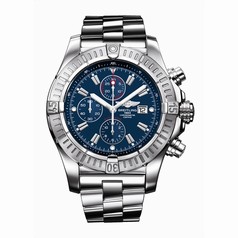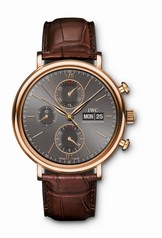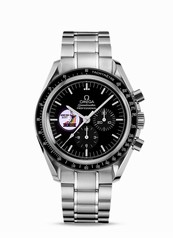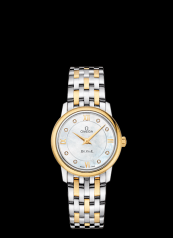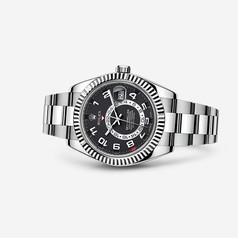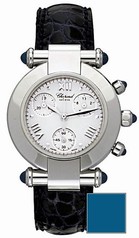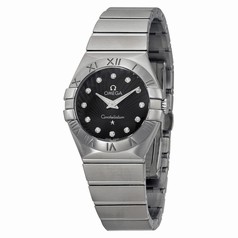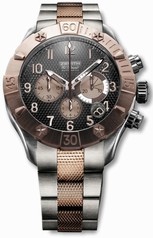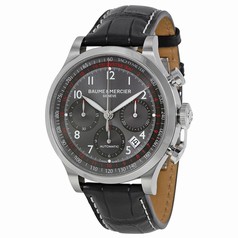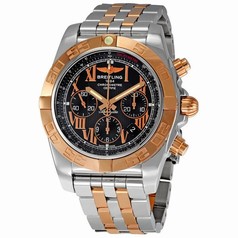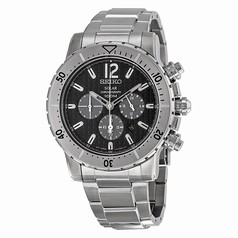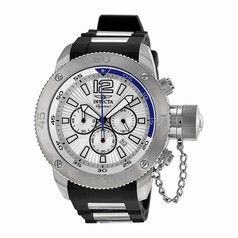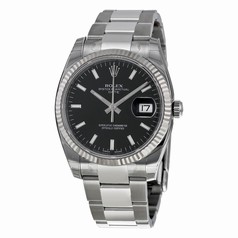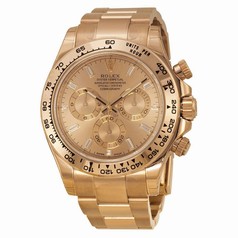IWC - Probus Scafusia
1868: Florentine Ariosto Jones, a watchmaker from Boston, Massachusetts, founds the International Watch Company in Schaffhausen. His aim: to produce high-quality movements for the American market.
Jones designs the Jones calibre, a high-quality pocket watch movement with an elongated index regulator for fine adjustment of the accuracy.
1874: Transformation of IWC into a joint stock company.
1874/75: Construction of new premises and the current headquarters of IWC at Baumgartenstrasse 15, next to the River Rhine.
1875: IWC has 196 employees.
1876: America introduces new import duties on watches, which exclude IWC from its most important market. Jones departs, and the Schaffhauser Handelsbank acquires the business. Frederic Frank Seeland, a US citizen, is appointed as the new Managing Director.
1879: IWC participates in the World Fair in Sidney.
Seeland's management strategy fails.
1880: IWC passes into the ownership of Schaffhausen engine manufacturer Johannes Rauschenbach-Vogel.
1881: Following the death of the father, his son Johannes Rauschenbach-Schenk takes over the business.
1882: IWC develops and produces the Elgin calibre.
1884: Czar Ferdinand I of Bulgaria is the first prominent IWC connoisseur. He buys IWC watches as gifts to loyal comrades-in-arms.
1885: The first watches with a digital display of the hours and minutes (Pallweber system) leave the workshop in Schaffhausen. A world premiere.
1887: Manufacture of the Magique, a watch in a cabriolet case which can be converted into a hunter or a Lepine and has a 24-hour display.
1891: The manufactory supplies the Italian State Railways with service watches for the first time.
1893: Production of pocket watch calibre 52 starts.
1898: Stauffer, Son & Co. in London take over IWC imports to Great Britain and the Empire. They market the watches from the Schaffhausen manufactory under their own name.
1899: The first wristwatches from Schaffhausen are delivered.
1903: Emma Marie Rauschenbach, daughter of Johannes Rauschenbach, marries the psychologist and psychiatrist Dr. Carl Gustav (C.G.) Jung. Her younger sister, Berta Margaretha, marries the Schaffhausen industrialist Ernst-Jakob Homberger in the same year.
1905: Following the death of Johannes Rauschenbach, his son-in-law Ernst-Jakob Homberger takes over the management of IWC on behalf of Rauschenbach's heirs. Homberger also manages the Georg Fischer (GF) industrial company in Schaffhausen at the same time.
1906: IWC wins the Grand Prix at the World Fair in Milan.
1915: IWC designs and launches a wristwatch with the newly developed calibre 75 for the first time.
1920: IWC pays its Managing Director a monthly salary of 1000 francs and an annual bonus of 3000 francs.
1929: Ernst-Jakob Homberger acquires the holding of his brother-in-law C.G. Jung and becomes the sole owner of IWC.
1930: Production of the pocket watch calibre 67/68 starts.
1935: Exports to the USA take place jointly with Patek Philippe of Geneva.
1935/36: The Homberger sons, Hans Ernst and Alex Homberger, win the "Steward's Challenge Cup" in the Coxless Fours at Henley in 1935 and 1936, together with their team mates from the Zurich Rowing Club, and the "Grand Challenge Cup" in the Eights in 1936 together with their brother Rudolf Homberger.
1936: The first "special watch for pilots" is launched. This watch, with its black dial and bold luminous numerals and hands, has a rotating bezel with a register arrow and an antimagnetic movement.
1938: To meet the needs of the Royal Navy, IWC supplies a series of observer's pocket watches with a large seconds hand.
The Managing Director's salary is reduced to 850 francs, in view of the economic crisis, and a departmental manager earns 250 francs.
1939: The Portuguese importers Rodriguez and Teixeira from Lisbon and Porto order a series of wristwatches with extremely accurate pocket watch movements. This is the hour of birth of the Portuguese watch.
1940: In response to the demand, IWC develops the Big Pilot's Watch with a central seconds hand.
IWC sells 74.6 per cent of its watches to Europe, 21.3 per cent in Switzerland and 4.1 per cent on other world markets and in Asia.
1944: On 1 April, an American squadron bombs IWC during an air raid on Schaffhausen. On the occasion of the 70th birthday of the British Prime Minister, Winston Churchill, a group of eight doctors from Zurich present him with an IWC gold hunter pocket watch bearing the inscription: "To The Right Honourable Winston S. Churchill, The Dauntless and Cheerful British Prime Minister, Europe's Liberator, Dedicated for his 70th Birthday by Admiring Zurich Physicians, Nov. 30th 1944".
Albert Pellaton, born in 1898, leaves his position as a designer at Vacheron Constantin to take up an appointment as Technical Director of IWC.
1945: In the W.W.W. (Watch Wrist Waterproof), IWC builds its first water-resistant military watch for the ground troops of the British Army.
1946: Pellaton's first design is the calibre 89 with a central seconds hand and outstanding accuracy.
1948: Based on a specification issued by the Royal Air Force, IWC produces the Mark XI pilot's watch with the calibre 89. It also has a second inner case made of soft iron to protect the movement against magnetic influences.
1949: Design of the women's calibre 41.
1950: Albert Pellaton designs the calibre 85, the first automatic winding mechanism from IWC. The "Pellaton" system, with its pawl winding mechanism instead of the conventional variable gearing, is a patented proprietary development by IWC.
1955: The Ingenieur with automatic winding first sees the light of day. After the death of Ernst Jakob Homberger, Hans Ernst Homberger becomes the last private owner of the manufactory.
1959: Design of the calibre 44. This is the first automatic women's movement from IWC.
1960: IWC sells 42.2 per cent of its watches on other world markets and in Asia, 38.3 per cent to Europe and 19.5 per cent in Switzerland.
1967: The diving adventure begins for IWC. With the Aquatimer, the manufactory establishes the story of its success in the production of diver's watches. Offering revolutionary pressure resistance to a depth of 200 metres, it is an indispensable professional companion for underwater use.
1969: IWC is involved in the development of the Beta-21 quartz movement. This is the first wristwatch calibre with quartz control (vibration frequency 8192 Hertz) and marks a watchmaking revolution.
1970: The first wristwatch with the Beta-21 quartz movement is launched bearing the name Da Vinci.
1973: With 404 employees and an annual production of 50,000 watches, IWC achieves an all-time production record.
1974: The price of gold explodes from 4850 francs (in 1970) to 18,000 francs (and goes on to reach its zenith a few years later at 40,000 francs per kilogram). At the same time, the Swiss franc experiences a phase of rapid appreciation. The export price of watches increases by 250 per cent, and the watchmaking crisis makes its effects felt.
1976: With the new Ingenieur SL - super antimagnetic to 80,000 A/m - IWC takes the Ingenieur tradition further. At 275 g, the variant in solid 18-carat yellow gold is the heavyweight of the Ingenieur family.
1977: Creation of the calibre 9721. The first pocket watch from IWC with a calendar and moon phase display. IWC embarks on its complications. These include a series of complicated pocket watches, some of which are also skeletonized.
1978: Cooperation with the designer F.A. Porsche results in the Compass Watch, the first wristwatch with a built-in compass. In the same year the German instrument maker VDO Adolf Schindling AG takes over IWC.
1980: The number of employees falls to 149.
IWC acquires new know-how in the machining of titanium. This absolutely non-allergenic and skin-friendly material is particularly lightweight and highly resistant to impact. The technically challenging production of titanium cases and titanium bracelets leads to the exchange of experiences with Aerospatiale and other leading technology companies. With its mechanical titanium chronograph, designed by F.A. Porsche, IWC produces the world's first chronograph in a titanium case.
1981: IWC Financial Director Otto Heller is appointed as Chairman of the Board of Directors. Gunter Blumlein, who will subsequently become Managing Director of IWC and a member of the Board, is a consultant to IWC.
1982: The Federal German Navy commissions the manufactory to design a totally non-magnetic watch for its clearance divers. The watch is water-resistant to a depth of 2000 metres and is known as the Ocean 2000 in its civilian version.
1985: With the Da Vinci, IWC presents the first chronograph with a perpetual calendar, which has a mechanical program until the year 2500. It knows every leap year by heart and requires no adjustment - apart from the replacement of the century slide supplied with the watch. Only the years 2100, 2200 and 2300 need a minor correction to be made.
These are not leap years according to the Gregorian calendar. The perpetual calendar also has the most accurate moon phase display, and the year is displayed in four digits.
1986: IWC begins to use zirconium oxide, an absolutely scratch-resistant and to all intents and purposes unbreakable ceramic material, as a new case material.
1987: With the Novecento (Italian for: twentieth century), the Schaffhausen manufactory presents the first rectangular, water-resistant and automatic watch with a perpetual calendar.
1988: For its newly introduced pilot's chronographs, IWC uses the hybrid calibre 630, which at the time was the slimmest and smallest chronograph quartz movement produced anywhere.
1989: The Ingenieur receives a completely new movement with the ability to resist magnetic fields at field strengths up to 500,000 A/m. In a series of tests, it emerges that the new Ingenieur even has the ability to withstand magnetic fields of 3.7 million A/m without any variation in accuracy.
1990: With the Grande Complication, the first chronograph with a perpetual calendar and a minute repeating mechanism in wristwatch format, the manufactory achieves a quantum leap in precision watchmaking after seven years' development. To this day, the Grande Complication is the only complicated timepiece in its class to be manufactured in a continuous small run of 50 watches per year.
1991: The Ingenieur Chrono-Alarm and the compass watch made of titanium are introduced at the Basel Exhibition. The first edition of WATCH INTERNATIONAL, the watch magazine from IWC, is published.
1992: IWC gives its approval for a split-seconds chronograph (Rattrapante) in a steel case, in the tradition of its pilot's watches.
1993: The ultimate horological achievement is called Il Destriero. To mark the 125th anniversary of the Schaffhausen manufactory, the world's most complicated mechanical watch is made in a unique series of 125 units. Tourbillon, split-seconds chronograph, minute repeating mechanism and numerous other complications are the features of this world exclusive.
Also to mark its 125th anniversary, IWC issues a limited series of its Portuguese watch and in so doing revives the tradition of large-calibre wristwatches.
1994: The Mark XII pilot's watch continues the tradition of the legendary Mark XI.
1995: The Da Vinci receives a tenth hand on its tenth birthday and is since also available as a split-seconds chronograph. Another new model is the Portuguese Chrono-Rattrapante, a large-calibre chronograph with a split-seconds hand.
An unmistakable new product, finally, is the Portuguese Minute Repeater. It is readily identifiable by the small seconds hand at 9 o'clock and the slide on the left side of the case.
1996: The manufactory launches the Portuguese Automatic, an elegant watch with a small seconds hand, and the Novecento Automatic without a perpetual calendar, yet still rectangular and water-resistant.
1997: The new GST sports watch line makes its debut.
1998: IWC designers launch the UTC (Universal Time Coordinated) with independently adjustable minute and hour hands and a second time zone.
1999: With the GST Deep One, the manufactory also demonstrates its horological creativity in the field of diver's watches. The Deep One is the first watch with a mechanical depth gauge. 2000: With the calibre 5000, a large calibre with an eight-day movement, power reserve display and Pellaton automatic winding system, the IWC designers develop a calibre especially for large wristwatches. The Portuguese Automatic, produced in a limited edition, is fitted with this exclusive calibre.
The Geneva-based luxury goods group Richemont SA acquires the three watch manufacturers IWC, Jaeger-LeCoultre and A. Lange & Söhne. The new CEO of the company is Georges Kern.
2001: New additions to the sports watches in the GST range are the GST Chrono-Rattrapante and the GST Perpetual Calendar.
IWC goes on-line with its Collectors Forum, the first brand-specific discussion platform for watch enthusiasts.
2002: At the SIHH in Geneva IWC presents the Big Pilot's Watch with its seven-day movement, automatic winding, power reserve display and date display, and again resumes the in-house tradition of oversized pilot's watches. This horological masterpiece has a power reserve of 168 hours.
2003: The Portuguese Perpetual Calendar, with its new design of perpetual calendar and the world exclusive two-hemisphere display of the moon phase, maintains the IWC tradition of innovation at the SIHH in Geneva. A second highlight is the Spitfire range of pilot's watches.
2004: Through their partnership, IWC enables The Cousteau Society to undertake an anniversary expedition to the Red Sea. It launches the Aquatimer "Cousteau Divers" special limited edition to commemorate the first research voyage in 1953 under the leadership of Commander Cousteau. At the same time, with its new Aquatimer generation, IWC opens a new chapter in the story of its diver's watches. There are new additions to the Portuguese family: the Portuguese Tourbillon Mystere, the Portuguese Minute Repeater Squelette and the Portuguese Automatic round off the range.

